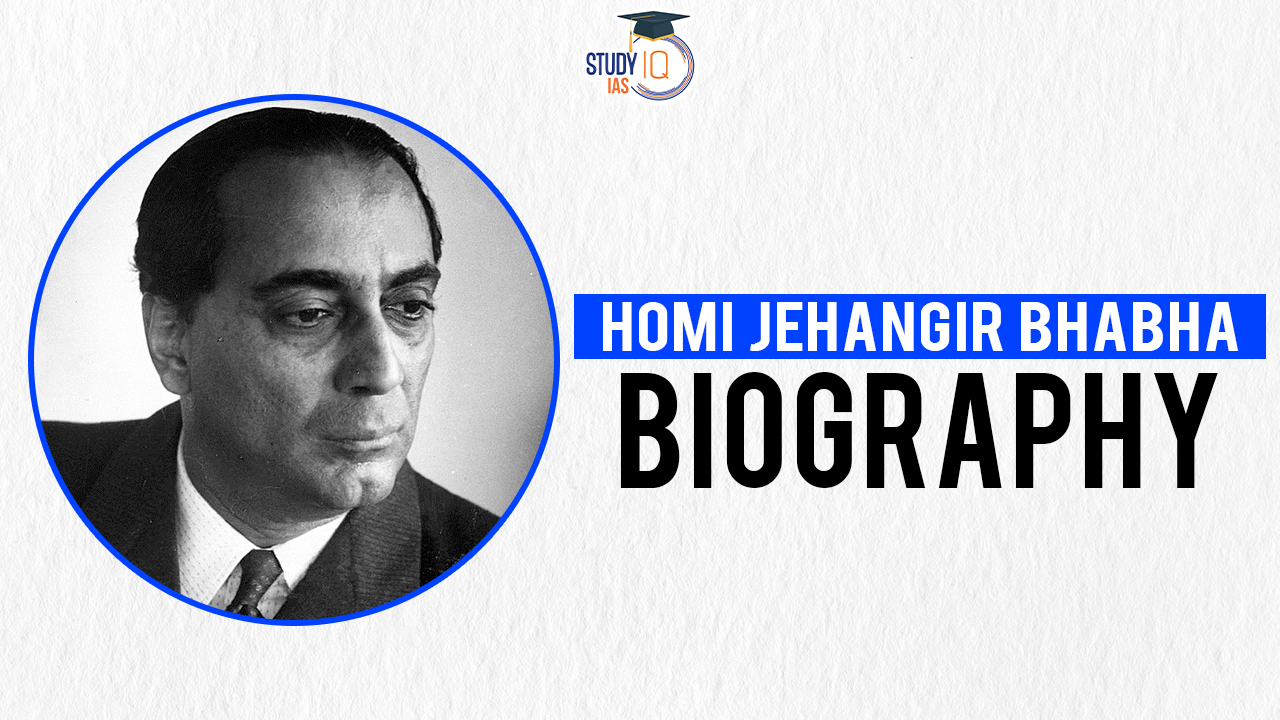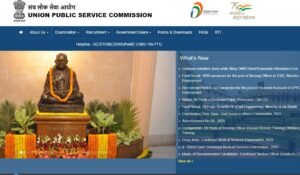Table of Contents
Birth Anniversary of Homi Jehangir Bhabha
Homi Jehangir Bhabha was born on October 30, 1909, in Bombay, India. He was a renowned nuclear physicist and the architect of India’s nuclear program. He is also credited with founding the Tata Institute of Fundamental Research (TIFR) and the Atomic Energy Establishment, Trombay (AEET), which was later renamed the Bhabha Atomic Research Centre (BARC) in his honour.
Birth Anniversary of Homi Jehangir Bhabha is celebrated on October 30th every year in India. It is a day to remember his contributions to science and technology and to inspire future generations of scientists and engineers. In this article, Dr. Homi J. Bhabha’s contributions to life, education, and everything to learn more about this eminent scientist.
Homi Jehangir Bhabha Biography
Most people agree that Homi Bhabha had a significant role in the advancement of science and technology after India gained its freedom. He outperforms other notable and significantly more experienced Indian scientists of the time. He was solely responsible for establishing and expanding our recently independent, severely underdeveloped country’s extensive atomic energy programme.
Dr. Homi J. Bhabha is credited as being the father of the nation’s nuclear programme due to his involvement in the nuclear programme. He was also the founding director of the AEET and a key figure in India’s development of nuclear weapons.
Homi Jehangir Bhabha and Oppenheimer
Homi Jehangir Bhabha and J. Robert Oppenheimer were two of the most renowned physicists of the 20th century. Both men were pioneers in the field of nuclear physics and played key roles in the development of their respective countries’ nuclear programs.
Bhabha and Oppenheimer had similar views on the role of science and technology in society. They both believed that science and technology could be used to improve the lives of people all over the world. They also shared a common vision for a peaceful world in which science and technology would be used for the betterment of humanity.
Here are some specific examples of the collaboration between Bhabha and Oppenheimer:
- In 1957, Oppenheimer visited India at Bhabha’s invitation. During his visit, Oppenheimer gave a series of lectures at the Tata Institute of Fundamental Research (TIFR).
- Bhabha and Oppenheimer collaborated on the development of the “cascade process” for enriching uranium. This process is still used today to enrich uranium for nuclear power reactors.
- Bhabha and Oppenheimer also collaborated on the development of the “Bhabha scattering” theory. This theory explains the scattering of electrons and positrons by each other.
Homi Jehangir Bhabha Early Life
Homi Jehangir Bhabha was born in Mumbai on October 30, 1909, into a prominent Parisi family with wealth and clout in the west of India. Lawyer Jehangir Hormusji Bhabha was his father. Bhabha initially attended Cathedral School before enrolling in Elphinstone College at the age of fifteen to pursue his studies. Additional coursework was then completed at the Royal Institute of Science in Bombay.
Bhabha’s father and uncle, Sir Dorab Tata, wanted him to major in engineering so that after earning his degree, he could accept a top post in the Tata Iron and Steel Company. According to the wishes of his family, Bhabha started his studies at Cambridge University in 1927, majoring in mechanical engineering. Bhabha, however, soon developed a greater interest in theoretical physics after being influenced by Paul Dirac.
Bhabha continued at Cambridge after successfully completing the Mechanical Engineering Tripos, and with the agreement of his family, he started studying theoretical physics. He again earned a first-class grade in the Mathematics Tripos in 1932, and in 1934 he graduated from the University of Cambridge with a doctorate in nuclear physics.
Homi Jehangir Bhabha Education
Up until 1927, he continued his education at the Royal Institute of Science. To start his mechanical engineering studies, Homi enrolled at Cambridge University. But he eventually realised that pursuing science, not engineering, was his true calling. About the issue, he told his parents. Homi’s generous father agreed to cover the cost of his remaining science classes so that he may earn a top-notch mechanical engineering degree. He passed the mechanical engineering exam in 1930 with a first-class score.
His father followed his commitment and gave him permission to complete his schooling. Homi’s maths instructor at the time was Paul Dirac, who was earning a doctorate in theoretical physics.
After receiving his PhD in nuclear physics, he wrote his first academic essay, “The Absorption of Cosmic Radiation,” which helped him succeed in 1934 when he was given the Isaac Newton Full scholarship, which he kept for the next three years. In the 1930s, nuclear physics was a young discipline that frequently provoked heated debates among experts. There were several changes in this area. In 1935, he also made a crucial new scientific discovery. Working with Niels Bohr, he determined the features of electron-positron scattering. Later, this was modified to Bhabha scattering in his honour.
Achievements of Homi J Bhabha
Bhabha’s work on Compton scattering, the R-process, and the development of nuclear physics were among his most important contributions. Bhabha supported studies in microbiology, radio astronomy, electronics, and space science. Bhabha was instrumental in persuading Jawaharlal Nehru, India’s prime minister at the time, to begin the country’s nuclear programme.
- Bhabha conducted his own independent study on nuclear weapons in 1944.
- In Bombay (modern-day Mumbai), Bhabha founded the Tata Institute of Fundamental Research in 1945.
- He became the first chairperson of the Atomic Energy Commission in 1948. Later, Nehru nominated him as the head of the nuclear weapons development programme.
- Bhabha represented India in IAEA sessions in 1950.
- In Geneva, Switzerland, in 1955, he presided over the United Nations Conference on the Peaceful Uses of Atomic Energy.
Homi J Bhabha: Father of the Indian Nuclear Programme
Dr. Homi Jehangir Bhabha developed a plan that emphasised utilising the country’s abundant thorium reserves rather than its limited uranium reserves to generate electricity. In sharp contrast to every other nation in the world, this one adopted a thorium-centered policy. Additionally, this developed into India’s three-stage nuclear power programme.
- Stage 1:Pressurized Heavy Water Reactor
- Stage 2:Fast Breeder Reactor
- Stage 3:Thorium-Based Reactors
Homi Jehangir Bhabha Awards and Honors
- Bhabha was chosen as a Fellow of the Royal Society in March 1941.
- Bhabha received the Adams Prize, the highest honour bestowed by the University of Cambridge, in 1942.
- The honourable Government of India conferred the distinguished Padma Bhushan upon Bhabha in 1954.
- In 1958, Bhabha won the election to become an American Academy of Arts and Sciences Foreign Honorary Member.
Homi Jehangir Bhabha’s Death
Bhabha passed away in a crash involving an Air India Boeing 707 in 1966, not far from Mont Blanc. Official accounts claim that the accident was caused by a miscommunication between the pilot and Geneva Airport on the plane’s position in relation to the mountain. Although the cause of his death is still unknown, conspiracy theories suggest that the murder was committed to stop India’s nuclear effort.
Bhabha was incredibly influential and always had an impact outside of his specific field of study. Thanks to his boundless energy, comprehensive vision, and influence in the power networks, he made important contributions to more diversified sectors of Indian research outside of the atomic power programme and empirical studies in physics and mathematics.
The brief and somewhat inconsistent summary of Homi Bhabha’s life and career should be concluded by quoting J. R. D. Tata, who stated of Bhabha: “Homi was a completely complete guy. He had expertise in the humanities, the arts, and music and was a scientist, architect, master builder, and administrator.”
Homi Jehangir Bhabha and Vikram Ambala Sarabhai
Homi Jehangir Bhabha and Vikram Ambalal Sarabhai were two of the most important scientists in India’s history. Bhabha was the father of India’s nuclear program, while Sarabhai was the father of India’s space program.
Homi Jehangir Bhabha and Vikram Sarabhai were both visionary leaders who had a profound impact on the development of science and technology in India. They were both committed to using science and technology to improve the lives of the Indian people. Bhabha and Sarabhai were also close friends and colleagues. They worked together to promote the development of science and technology in India. They also shared a common vision for India’s future as a leading scientific and technological power.


 UPSC ESIC Nursing Officer Final Result 2...
UPSC ESIC Nursing Officer Final Result 2...
 UPSC CMS Admit Card 2025 Out: Download L...
UPSC CMS Admit Card 2025 Out: Download L...
 UPSC Study Material for Prelims & Ma...
UPSC Study Material for Prelims & Ma...





















